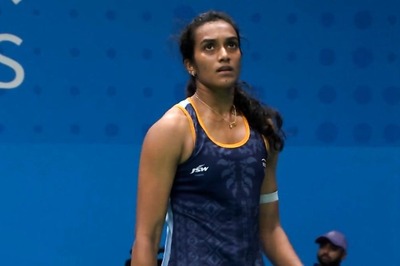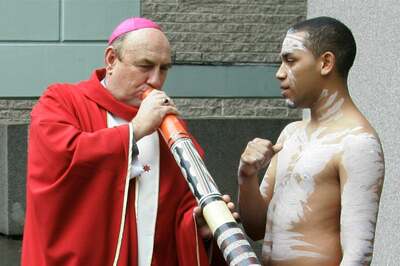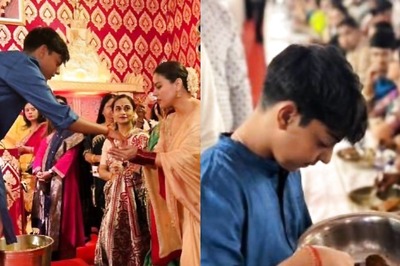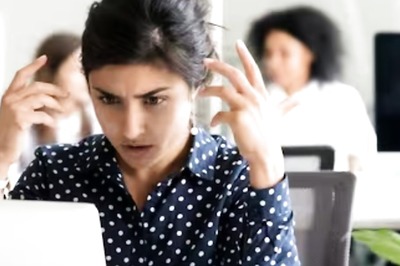
views
The term ‘Stalin’, in Russian, means a “man of steel”. And the Soviet strongman, Joseph Stalin, lived up to his name. He deftly led the Soviet Union during World War II and soon after the great war was over, at the Yalta conference, he outmanoeuvred US President Franklin Roosevelt and British Prime Minister Winston Churchill with “only paper concessions” that would result in the “imposition of Communism throughout Eastern Europe”, as author Diana Preston writes in Eight Days to Yalta. Stalin also, lest one forgets, killed lakhs of people within the USSR, and persecuted many more — a number that would put the murderous Nazis in Germany to shame.
Such was the horror of Stalin that it created a class of whisperers in the erstwhile Soviet Union. British historian Orlando Figes, in The Whisperers, explores the terrorised lives of people in Stalin’s Russia who were afraid to talk in public and preferred to speak in whispers. “The Russian language has two words for a ‘whisperer’ — one for somebody who whispers out of fear of being overheard (shepchushchii), another for the person who informs or whispers behind people’s backs to the authorities (sheptun). The distinction has its origins in the idiom of the Stalin years, when the whole of Soviet society was made up of whisperers of one sort or another,” Figes writes.
His namesake in India has now threatened to unleash a similar terror in the country. Udhayanidhi Stalin, the son of Tamil Nadu chief minister MK Stalin, has called for the eradication of those who follow Sanatana Dharma. “There are some things which we have to eradicate and we can’t merely oppose. Mosquitoes, dengue fever, malaria, corona, all these are things which we cannot oppose, we have to eradicate them. Sanatanam is also like this. Eradicating, not opposing, Sanatanam should be our first task,” he has said.
Anti-Sanatanism isn’t a new phenomenon in Dravidian politics, especially the one espoused by the DMK. It can be traced to EV Ramasamy Naicker, popularly known as ‘Periyar’, though its roots go even deeper to missionaries led by Bishop Robert Caldwell, who identified Tamil Brahmins with Indo-Europeans, accusing them of “subduing” and “colonising” the indigenous Dravidians.
Here are the five reasons why Udhayanidhi’s anti-Sanatana rant is as dangerous and mischievous as it is ahistorical.
Demise of good Hinduism, bad Hindutva narrative
This latest episode has drawn the curtains on the ‘Hinduism is good-Hindutva is bad’ narrative. So far, there seems to have been a sort of political consensus among politicians who swear by secularism to ensure that this demarcation is clear and categorical. But now this façade is gone too: Hinduism too has become a bad word in Indian politics, as Udhayanidhi’s statement and the muted response of the DMK’s alliance partners, including that of the Congress, suggest.
It is kind of a “chaiwala” gaffe for the UPA, which has now rechristened itself into I.N.D.I.A., going to the polls with an alliance partner whose “prince charming” equates Sanatana Dharma with a disease and calls for its eradication. It is a self-goal for the Opposition, which is already in disarray and more so when the alliance is on the back foot on the issue of minority pandering. The BJP couldn’t have asked for a better controversy than this, with barely months left for the Lok Sabha elections in 2024.
A new low by DMK’s standard too
Even in Tamil Nadu, the DMK leaders would often try to conceal their anti-Hinduism stand by focusing primarily on anti-Brahmanism. Periyar, in his public speeches and writings, would call for Brahmins to be “driven away from this land”; he even advocated their killing. And when he would advocate his followers to “go inside (a temple) and break all the idols”, he would invariably defend it with the need to do away with “regressive”, “superstitious” practices.
M Karunandhi, Udhayanidhi’s own grandfather, manifested an anti-Hindu outlook when he would criticise the Hindu practice of smearing ash or saffron or sporting a “tilak” on the forehead. But he would qualify his statements by questioning the need for “such things in a country which preached equality of all religions”. Likewise, he had once described Hindus as “robbers”. But later he clarified that he meant Hindus were robbers “who stole hearts”.
MK Stalin, Udhayanidhi’s father, too, displayed similar tendencies but he would also make sure that such feelings were well-concealed. He, in fact, in 2019, lashed out at the Opposition led by the BJP for calling the DMK “anti-Hindu”, as he listed out “pro-Hindu things” that the DMK governments had done in the state: “to check the theft of idols from temples”, to improve the “administration and revenues of temples”, and to bring in “pension scheme for priests”. He even recalled how his wife frequently visited temples but not once did he ask her why she was going there!
Udhayanidhi, with his genocidal call, thus has crossed the line, even by the DMK standard. He uttered what his father, his grandfather and others would say in whispers, with the right sprinkling of ruse and alibis, even when they meant more or less the same.
Brahminism just an excuse, Hinduism real target
One could still have ignored the genocidal call, howsoever condemnable it may sound, but the fact remains that Udhayanidhi Stalin is not just another DMK leader trying to cash in on the existing anti-Brahminical sentiments (of whatever remains there on ground) in Tamil Nadu. He is the son of the existing chief minister, whose party’s track record on treating Hindus in general and Brahmins in particular has been wanting.
In fact, following the genocidal statement, the DMK’s innate anti-Hindu strand is out of the bag. Brahminism has been an excuse. One can understand this from the fact some of the most brutal attacks on the Scheduled Castes in Tamil Nadu took place post-1967 during the DMK regime, as VS Naipaul explains in India: A Million Mutinies. In 1969, for instance, 40 Harijans were burnt alive by Thevars, a powerful middle caste.
The truth is that Brahmins and Hindu temples were targeted in Tamil Nadu primarily because they were the most obvious symbols of Hinduism and civilisational India. The Dravidian parties took up this agenda with a missionary zeal post-Independence when they targeted Brahmins (a young Tamil Brahmin confessed to Naipaul that it was “not easy for Brahmin boys nowadays”) and brought Hindu temples under State control. While a Brahmin was seen as the purveyor of civilisational India, a temple, especially in the South, wasn’t just about prayer and worshipping. It was more of a socio-economic institution, simultaneously running its own schools and hospitals, and building dams and granaries for adjoining villages. A temple was also the patron of art and literature. So, the state takeover of temples in the name of Brahminism threatened to not just destroy the traditional hold of Hinduism over the masses, but also impoverished the society at large, both materially as well as intellectually and culturally.
Opening the door for Muslim, Christian persecution?
The fourth disconcerting aspect that comes out of the entire episode is the eagerness of a few parties in India, of which the DMK is an esteemed partner, to seek vengeance from today’s Brahmins for the alleged misdeeds committed by their ancestors in the past. Even if one concedes the worst of the caste system and accepts the role the Brahmins played in perpetuating this divide (Dharampal’s The Beautiful Tree refutes the extent of such claims), it is still indefensible to call for the genocide of today’s Brahmins.
Interestingly, these are the same people who conveniently seek the sanitisation of history books and ask Hindus not to analyse the violent, vandalistic streak of Muslim rulers in medieval times, saying such an attempt would bring harm to the current generation of Muslims. But isn’t Udhayanidhi Stalin, by making genocidal calls for Sanatana Dharma of real and perceived injustices committed by some Brahmins, is making a way for a similar treatment being meted out to today’s Muslims and Christians for centuries of jihad and the Goa Inquisition, respectively?
Against the very grain of history
Last, but not the least, the Udhayanidhi statement is ahistorical and against the very grain of history — both real and Communist concocted. The real history which is finally defying the Marxist stranglehold suggests that there never was an Aryan migration, far less an invasion. Latest findings, scientific as well as archaeological, back the overarching literary claim that if ever there was any migration it was an outward one, and not into this landmass.
But even if one concedes the Aryan migration theory, something which India’s eminent historians led by Romila Thapar have quietly shifted to given the dearth of archaeological evidences suggesting any such invasion in the second millennium BC, the Hinduism as we see today is regarded as more of a Dravidian product rather than the Aryan. In fact, “major aspects of later Hinduism are derived not from the Vedas, but from Harappan culture”, as Asko Parpola, Finnish Indologist and professor emeritus of South Asian studies at the University of Helsinki, writes in The Roots of Hinduism: The Early Aryans and the Indus Civilization (Oxford University Press).
Why would then the DMK target Hinduism which is primarily a Dravidian religion?
This is possible because of the party’s ideological aversion to Hinduism per se. Brahmanism has been a ruse to conceal their true nature. Udhayanidhi, in that way, has brought out in the open what was the open secret in the DMK parlance. And to his and his party’s misfortune, India isn’t a whisperer’s country. The backlash will be intense.
Views expressed in the above piece are personal and solely that of the author. They do not necessarily reflect News18’s views.




















Comments
0 comment